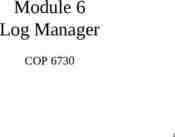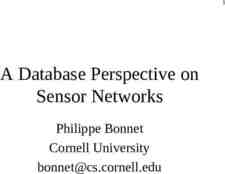Church Planting in Urban Contexts Chapter 22
11 Slides1.59 MB
Church Planting in Urban Contexts Chapter 22
Introduction Today, the majority of the world live in urban environments Reaching these people is our great challenge
An Urban World By 2030, as many as 5 billion people will live in cities In the less developed world, urban population will increase from 2. to 3.9 B in 25 years Migration and transformation of rural to urban are big factors in urbanization In the more developed world: 75% urban in 2005 to 81% urban in 2 Africa and Asia least urbanized in 2005; most urbanized by 2030 South America: 77% urban 2005; 84% urban 2030 Megacities: 20 in 2005; 22 by 2015 (over 10 mil each) – 2017: Tokyo-36M; Mumbai-22M; MexCity-22M; SaoPaulo-21M 51% of urban dwellers live in small cities (under 500,000)
General Characteristics of Cities Cities are places of influence and originate cultural change “He who wins the cities, wins the world” Six characteristics – Scale – requiring organization and many social networks – Centers – influence, culture, leadership, power, authority – Diversity – cultural, spiritual, political, economic – Specialization – critical mass allows focus on special skills and interests; can’t do that in a small town – Hierarchy – bigger gaps between rich/poor, powerful/less – Change – Constantly evolving, reorganizing, restructuring
Contrasting Urban Contexts In contrast to First World cities, Majority World cities – Social structure separates wealthy from struggling poor – Don’t have a large middle class – High birthrates – Political systems that allow multinational corps to export wealth – Poor levels of education – Culturally defined by colonial or pre-colonial periods – Challenged administratively: lacking expert workers
The Challenges of Urban Church Planting Migration – key: migration of rural peasants to majority world cities Immigration – key: North America is destination of majority of immigrants – cities Poverty – cities amplify the problems of the world: 2030 – 25% squatters- 2B in shanty towns HIV/AIDS – in heaviest impact areas, life is short, widows and orphans numerous
Examples Migration – Arrival Cities Shanty towns – Favelas in Rio
G.O.I.N.G. Urban – Qualities of the Urban Missionary God Dependent – the scale is vast, needs immense, warfare intense, great diversity Organizes by Global and Local Strategy – variety of strategies/methods to match the dynamic context of today Incarnational in Witness – live among them, preach the Word, do good to many Navigates Change Well – change is constant Grounded in a Biblical missiology – What is the local church in an urban setting? – Bring all social science insights under the scrutiny of the Word
U.R.B.A.N. Understands the City – research your city thoroughly Relates well to diversity – able to relate to a multitude of subcultures encountered in the course of ministry Balances Urban Complexity with Missional Simplicity – keep it sim so simple people can reproduce it Apostolically Oriented – an orientation to start, raise up leaders an then start again Networks with other Great Commission Christians – we need everyone who will give a true gospel witness and plant a healthy contextual church – Don’t pick fights over peripheral issues
Reaching Canada’s Cities Montreal Calgary Vancouver Toronto
Conclusion We need a massive calling out of people from the city to go to the cities of the world.
















